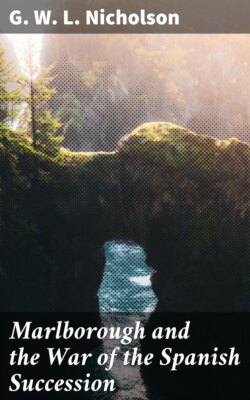Читать книгу Marlborough and the War of the Spanish Succession - G. W. L. Nicholson - Страница 5
На сайте Литреса книга снята с продажи.
The Supremacy of France in the Seventeenth Century
ОглавлениеTable of Contents
What were the circumstances in which England became involved in this war which was to bring her such profitable returns? Let us first look briefly at the political picture of Europe at the close of the seventeenth century. Dominating the scene was France, unified and expanded by forty years of masterful rule by "the grand monarch", Louis XIV. Pursuing his doctrine of "natural boundaries", Louis had fought two wars (the War of Devolution, 1667-8, and the Dutch War, 1672-8) in an attempt to extend French domains to the Rhine. He had managed to retain much of the fruits of this aggression by reaching a stalemate in a third conflict, the War of the League of Augsburg, 1689-97, thrust upon him by an alliance of European states who believed that the creation of a "balance of power" provided better assurance for stability in Europe than any enforced recognition of "natural boundaries".
Historical Section, G.S.
The lead in forming the Augsburg League in 1686 had been taken by the Emperor Leopold I, head of the Holy Roman Empire. This crumbling "survival of a great tradition and a grandiose title" was a loose alliance of some three hundred independent states covering roughly the territory of modern Germany, Austria, Czechoslovakia and Belgium. The most important member was Austria, which had been steadily growing stronger as the ancient empire, weakened by religious quarrels and destructive civil wars, fell into decline. The election to the imperial crown of a succession of princes of the Austrian branch of the House of Hapsburg had brought them little more than "an historical title and dignified trappings", and it is not surprising that from their court at Vienna they regarded the extension and consolidation of their own Austrian dominions as a more profitable venture than the defence of the decaying Germanic Empire. Of the German states which joined the league against Louis XIV the most powerful was the Electorate of Brandenburg, which in a few years was to become the Kingdom of Prussia.
The two other major partners in the original league were Sweden and Spain. The conquests of Gustavus Adolphus had made Sweden one of the largest states in Europe; her territories east of the Baltic extended from Finland to West Pomerania. But the enormous costs of her military campaigns had seriously weakened Sweden, and at the turn of the century, three years after the fifteen-year old Charles XII had ascended the throne at Stockholm, her chief rivals, Russia, Poland, Saxony and Denmark, banded together, judging the time ripe to strip her of her trans-Baltic possessions. As for Spain, once the leading power in Europe, the process of deterioration from her former greatness was far advanced. Her participation in the Thirty Years' War (1618-48) and subsequent struggles had emptied her treasury and exhausted her military strength. Her hold on her vast territories in the New World was slipping, and in Europe, although her Mediterranean possessions (Sardinia, the Kingdom of the Two Sicilies, and Milan) were still intact, she had been forced to cede to France part of the Spanish Netherlands (the present Belgium and Luxembourg). Nor could Spain look to the crown for strong leadership out of her troubles. Since 1665 the Spanish throne had been occupied by the sickly Charles II, who from birth had been practically an imbecile.
In 1689 the expansion of the League of Augsburg into the Grand Alliance, largely through the efforts of William III, brought Holland and England into the coalition against France. By the latter half of the seventeenth century Holland (variously called the United Provinces or the Dutch Netherlands) had become England's bitterest rival in sea power, trade and colonization (there were three Anglo-Dutch Wars between 1652 and 1674). These differences were composed, however, when in 1689, following the Revolution which drove James II into exile, his son-in-law, William of Orange, Stadtholder of Holland, was called to the English throne. William was the arch-enemy of Louis XIV, and he lost no time in embroiling England in his feud with France. Thus began the century-long struggle between the two countries which was to be fought out not only on the historic battlegrounds of Europe, but on less familiar fields in India and North America.
From the War of the Augsburg League, which the Treaty of Ryswick terminated in 1697, William III emerged with added stature and an influence in European politics which placed him on almost equal terms with Louis XIV. Eight years of inconclusive conflict coming at the end of a century which had seen more war than peace had left both sides exhausted, and there now seemed every reason for the two monarchs to seek a prolonged respite from hostilities. For William there was little choice. He could not engage in further fighting without the help of a strong English army. Yet his English subjects had no desire to be involved again in their Dutch King's continental troubles. Immediately after Ryswick Parliament ordered a rapid demobilisation of the army,[3] relying on England's insularity and a strong navy to keep her neutral in any future conflict. The adoption of this pacific policy and the dissolution of the coalition against him gave Louis (who was no more anxious to renew hostilities than was William) the advantage over his opponent. He could now play a bold hand in the complex game of European politics, knowing that when the opportunity arose he could advance his own interests without fear of effective opposition. That opportunity was to come in the disputed question of the Spanish Succession.
